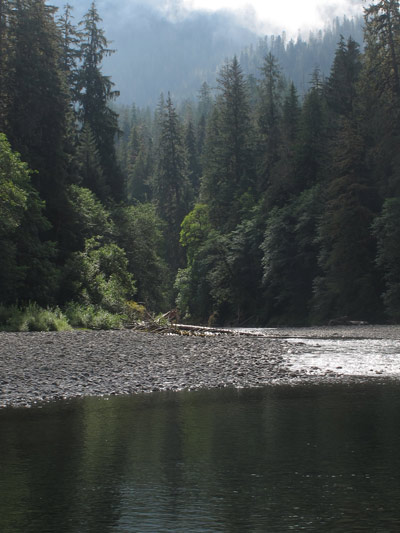By Caroline Brooks, Communications Intern
June offers us many occasions to celebrate: the end of school, the beginning of summer and, among all the season’s celebrations, National Rivers Month! All of these events encourage us to get outside and take advantage of this gift that Mother Nature has granted us.

Across the country, rivers serve people, animals and plants in a variety of ways. Humans rely on rivers for drinking water and recreational activities such as fishing, swimming and rafting. As for plants and animals, rivers serve as shelter where these living creatures can grow, reproduce and thrive. However, our rivers are falling victim to increasing pollution. National Rivers Month aims to get people learning about, celebrating, and cleaning up these waterways.
Humans are not the only group cleaning our rivers’ water. Forests contribute to the production of clean, healthy water by filtering and preserving water. The composition of their roots permit trees to absorb nutrients and impurities in groundwater. Two other components of trees— the leaves and branches— also play a role in this process by decreasing the speed of rainfall. Combined with the roots’ task to steady the soil, the slow journey from canopy to soil ensures that rainwater soaks gradually into the ground. This filtered water flows into lakes, streams and rivers, where it is able to satisfy the needs of humans and wildlife.
Through our Global ReLeaf program, American Forests partners with local communities to reforest riparian zones.
One project that sets out to accomplish these goals is the Whatcom County Riparian ReLeaf, which began in 2013. American Forests and Alcoa Foundation teamed up with the Nooksack Salmon Enhancement Association (NSEA) to restore the living conditions for local salmon in northwest Washington. The area experienced several events that threatened the salmon population: plant loss, reformed waterways, and destruction due to industry, agriculture and urban development. Together, American Forests, Alcoa Foundation and NSEA are planting 7,000 trees in 12 areas to reestablish the habitats that salmon need to dwell and feed.
The Whatcom County project is just one of many in which American Forests helps protect rivers. Stay tuned to Loose Leaf throughout the month to read about some of our other efforts that support America’s waterways.